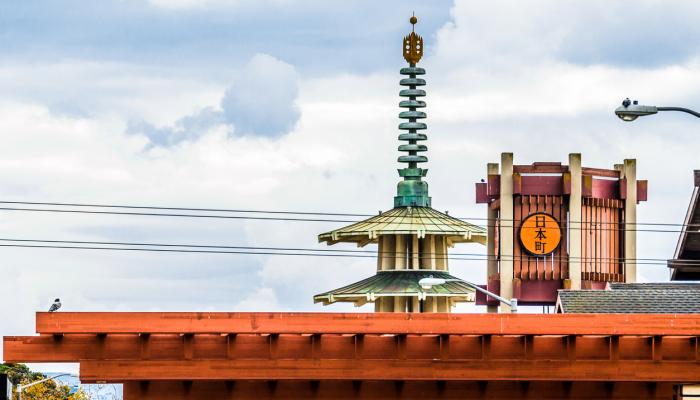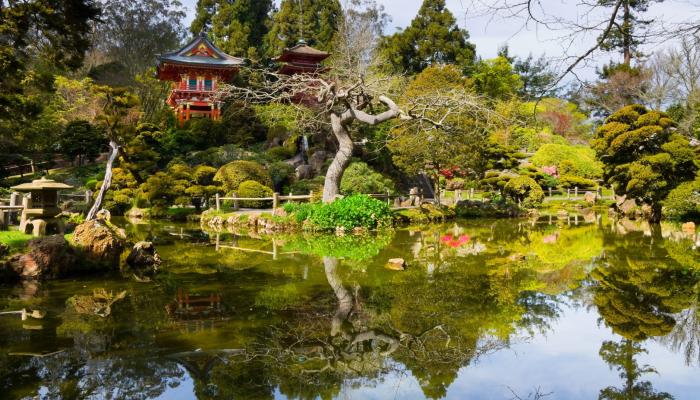Historic preservation provides an understanding of the location, distribution, and significance of historic and cultural resources. It is an effective strategy for conserving significant elements of the built environment to maintain a tangible physical connection to the past.
Preservation of significant historic and cultural properties is an important aspect of planning in San Francisco. Much of San Francisco's character, enjoyed by residents and visitors alike, depends on the retention of its rich historical building fabric. In practical terms, maintaining and rehabilitating older buildings and neighborhoods can mean savings in energy, time, money, and materials; preservation is an inherently "green" strategy. The Planning Department's Historic Preservation program, therefore, plays an important economic, environmental, and cultural role in the ongoing development of San Francisco. As a Certified Local Government, the Planning Department has demonstrated its commitment to meeting the standards set forth by the California State Office of Historic Preservation.
Preservation Programs
Landmark Designation Program
Landmarks and Landmark Districts are unique and irreplaceable assets to the city and its neighborhoods and provide examples of the physical surroundings in which past generations lived. The intent of Landmark designation is to protect, preserve, enhance and encourage continued utilization, rehabilitation and, where necessary, adaptive use of significant cultural resources.
Citywide Cultural Resources Survey
The San Francisco Citywide Cultural Resources Survey (SF Survey) is underway! SF Survey is a multi-year effort to identify and document places and resources of cultural, historical, and architectural importance to San Francisco’s diverse communities. SF Survey (1) supports community-led cultural empowerment efforts through partnerships, programming, and historic preservation protections and incentives, and (2) standardizes the historic resource review process for the California Environmental Quality Act (CEQA), building permit applications, development projects, and area plans.
Cultural Heritage
San Francisco is committed to safeguarding the historical, social, and economic value of its communities in a way that strengthens residents' and visitors' understanding and appreciation of these significant places and practices. Safeguarding our cultural heritage helps sustain the traditions, businesses, arts, and practices that construct the City's social and economic fabric for generations to come.
Cultural Landscapes
A cultural landscape embodies the associations and uses that evoke a sense of history for a specific place. Physical features of cultural landscapes can include trees, buildings, pathways, site furnishings, water bodies – basically any element that expresses cultural values and the history of a site. Cultural landscapes also include intangible elements such as land uses and associations of people that influenced the development of a landscape.
Initiatives
Historic Design Guidelines Project
Design Guidelines articulate expectations regarding the treatment of the built environment. They promote and protect neighborhood character and quality of life, and the Planning Department is currently developing design guidelines for historic structures and districts specific to San Francisco. The overarching goal is to establish guidelines consistent with the Secretary of the Interior's Standards that also addresses preservation goals and approaches consistent with San Francisco's Preservation Element (the Preservation Element establishes, at a policy level, the preservation expectations of the City). The guidelines will help establish a common directive as to how to treat historic resources, define a clear set of design principles, and identify a range of appropriate design solutions.
Heritage Conservation Element
The Planning Department is resuming work on the Heritage Conservation Element, which will be a new Element added to the General Plan. It is being created with the belief that the preservation of historic resources is essential to maintaining the character of the City of San Francisco. Historic resources are often affected by development projects, and historic preservation is a strategy for conserving significant elements of the built environment while allowing for growth and change to occur. San Francisco residents and community organizations have a long‐standing commitment to historic preservation as one of the important contributors to the quality of life in San Francisco.
Article 10 SF Landmarks and Historic Districts
The City of San Francisco maintains a list of locally designated City Landmarks and Historic Districts, similar to the National Register of Historic Places but at the local level. Landmarks can be buildings, sites, or landscape features. Districts are defined generally as an area of multiple historic resources that are contextually united. The regulations governing Landmarks, as well as the list of up-to-date, individual Landmarks and descriptions of each Historic District, are found in Article 10 of the Planning Code.
Owners of Landmark properties, or of contributors to Historic Districts, may be eligible for property tax relief (see the Mills Act section, below) and other incentives. Consult Preservation Bulletins No. 5, 9, and 10 for more information about Article 10 Landmarks, Historic Districts, and the landmarking process.
Article 11 Conservation Districts
Conservation Districts in San Francisco are located exclusively in the City's downtown core area. The regulations governing properties in these districts, and descriptions of each, are found in Article 11 of the Planning Code. Similar to traditional historic districts, which recognize historic and cultural significance, Conservation Districts seek to designate and protect buildings based on architectural quality and contribution to the character of Downtown. These downtown districts contain concentrations of buildings that together create geographic areas of unique quality and thus facilitate preservation of the quality and character of the area as a whole. For more general information about Conservation Districts, see Preservation Bulletin No.10.
Mills Act and Other Incentive Programs
The Mills Act is an important economic incentive program available in California for use by private property owners of qualified historic buildings. Enacted by the State of California in 1976 and amended in the San Francisco Administrative Code in 1996, the Mills Act provides for a potential 50 percent reduction in property taxes on qualified historical properties in exchange for the owner's agreement to maintain and preserve the resource in accordance with standards established by the Secretary of the Interior's Standards for the Treatment of Historic Properties.
Find out more about other incentive programs.
CEQA and Historical Resources
The California Environmental Quality Act (CEQA) provides the legal framework by which historical resources are identified and given consideration during the planning process. Two main steps are involved in the process; determination of whether or not the property is a "historic resource," and if so, whether the proposed changes to the property would cause a "substantial adverse impact" to the resource.To learn more about CEQA as it relates to historic resources, consult Preservation Bulletin No.16. Additional CEQA information is found in the Preservation FAQs.




